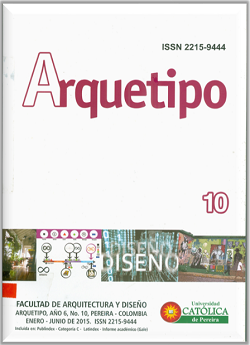From the technique and the design project to the information design
Keywords:
Interdisciplinary nature, research, functionalism, symbolism, subject and objectAbstract
Design, today considered a discipline in which various fields of knowledge converge, has evolved from a technical profession to consolidate into an interdisciplinary area supported by scientific theories. This article proposes a retrospective study from several milestones: the technique, the project, the functionalism, the symbolism and the information design. Although these facts do not address the history of design in all its dimensions, they allow an evolutionary view of the discipline, with the aim of reflecting on some of the aspects that have enriched its epistemic structure. It is concluded that it is important to create links between the work of design and the needs of the social subject in different scopes.
References
Aicher, O. (2001). Analógico y digital. Barcelona: Gustavo Gili.
Bonsiepe, G. (2000). Design as Tool for Cognitive Metabolism: From Knowledge Production toKnowledge Presentation. Politecnico di Milano.
Buchanan, R. & Margolin, V. (1995). Discovering design: explorations in design studies. Chicago: The University of Chicago Press.
Burdek, B. (2005). Design: The History, Theory and Practice of Product Design. Berlín: Birkhauser
Chun, W. & Keenan, T. (2006). An history and theory reader. New media, old media. New York: Taylor and Francis Group
Eco, U. (1994). Estructura ausente: Introducción a la semiótica (5a. ed). Barcelona: Lumen.
Gibson, W. (1984). Neuromancer. Barcelona: Círculo de Lectores.
Heidegger, M. (1976). El origen de la obra de arte. Chile: Ediciones del Departamento de Estudios Humanísticos de la Universidad de Chile.
Horta, A. (2012). Trazos poéticos sobre el diseño. Manizales: Editorial Universidad de Caldas.
La Ferla, J. (2007). El medio es el diseño audiovisual. Manizales: Editorial Universidad de Caldas.
Lévy, P. (2007). Cibercultura, informe al consejo de Europa. Barcelona: Anthropos.
Londoño, F. (2005). Interfaces de las comunidades virtuales. Formulación de métodos de análisis y desarrollos de los espacios en las comunidades en red. Manizales: Editorial Universidad de Caldas.
Manovich, L. (2001). The Language of New Media. Massachusetts: The MIT Press.
Margolin, V. (2000). Building a Design Research Community. Milan: Politécnicodi Milano.
Nielsen, J. (2000). Usabilidad. Diseño de sitios web. Madrid: Pearson. Norman, D. (1990. Psicología de los objetos cotidianos. Editorial Nerea. Aldamar
Peirce, S. (1991). Peirce on Signs: Writings on Semiotic. USA: The University of North Carolina.
Sloterdijk, P. (2006). El hombre operable. Notas sobre el estado de la tecnología génica. Revista observaciones filosóficas, 9, 22.
Weibel, P. (1998). El mundo como interfaz. El Paseante, 27, 28.

